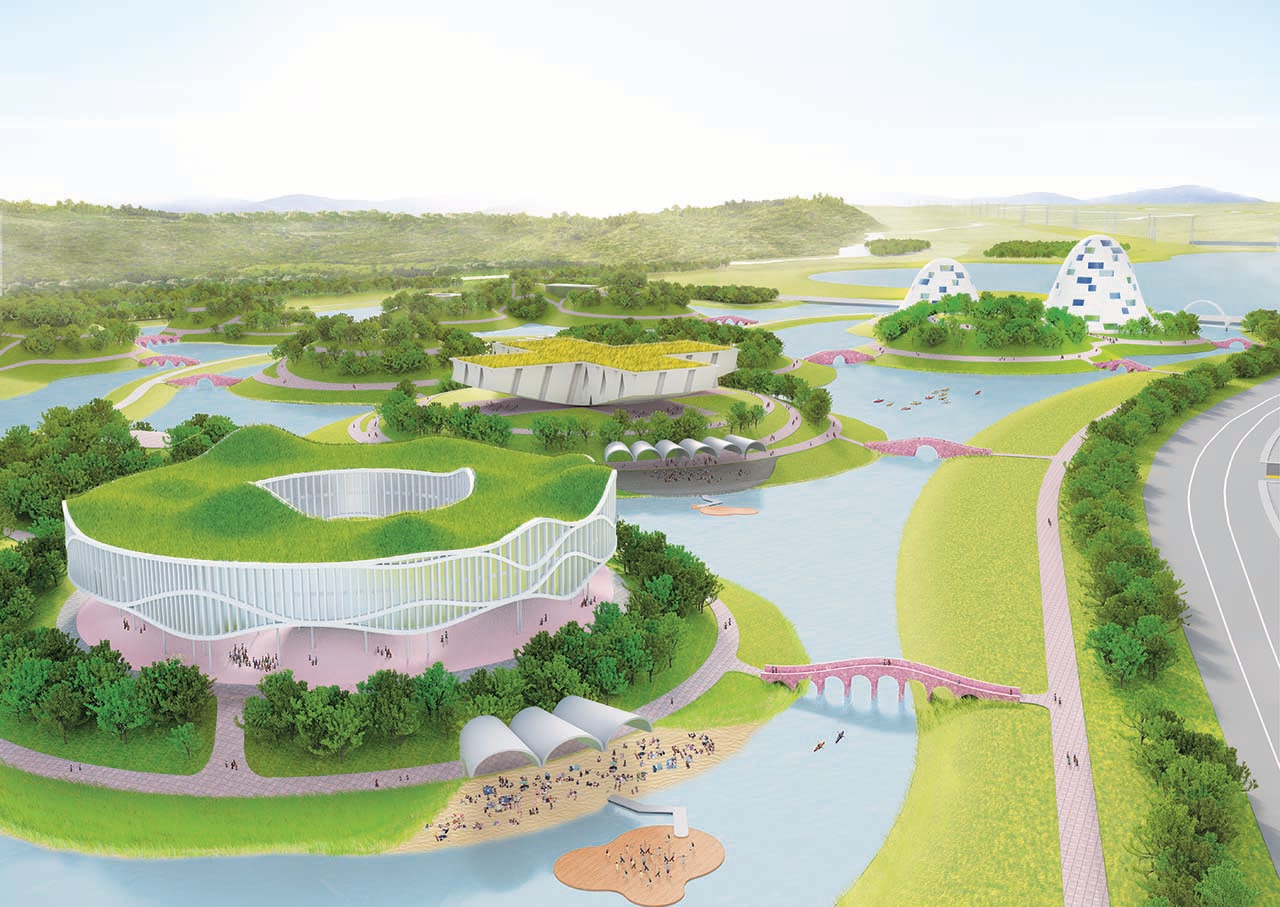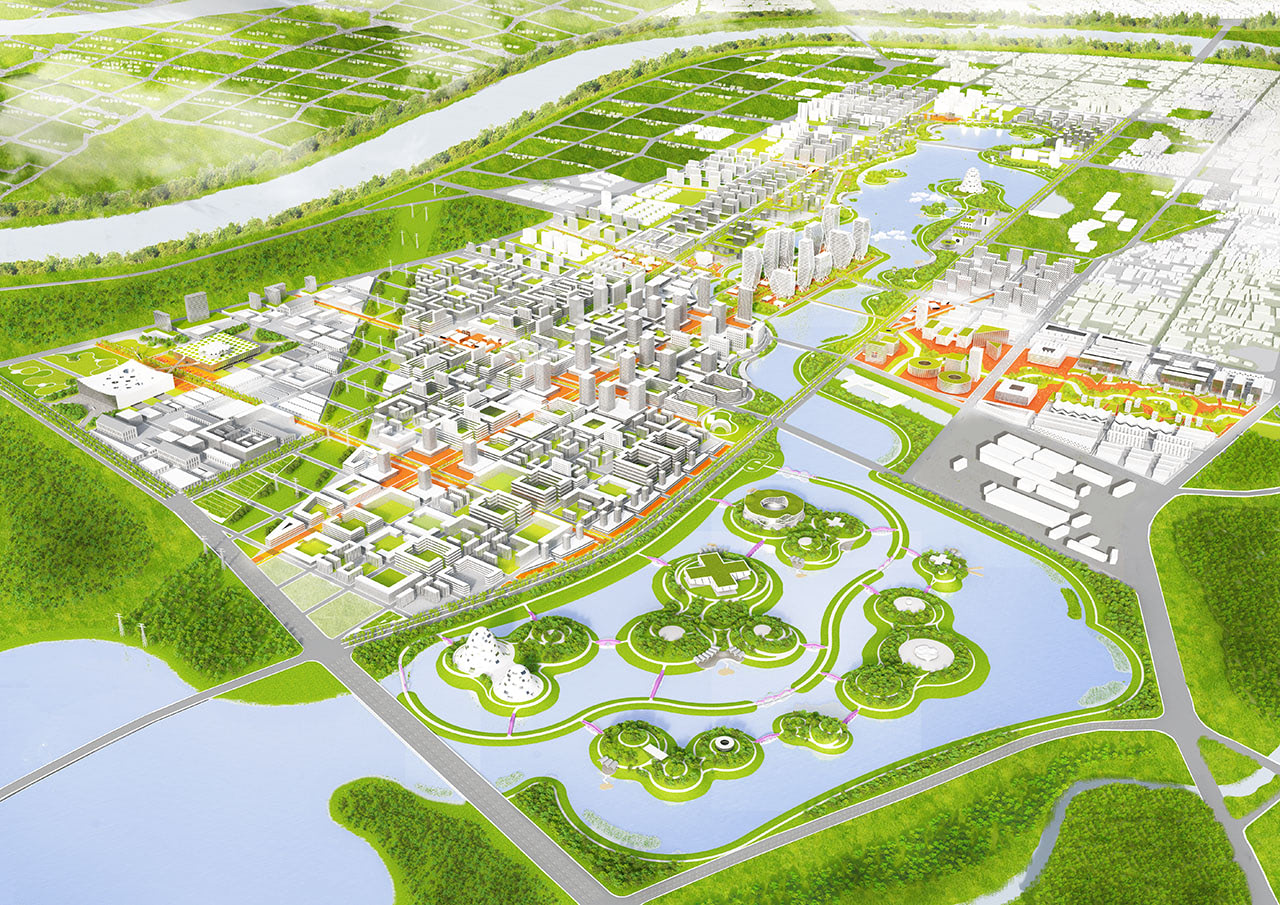With as much as 16 pilot projects in the making, sponge cities are a booming business in China. Their philosophy is simple: cities should contribute to solving water related problems instead of causing them. But how does this work?
 Sponge city render by UrbanLab.
Sponge city render by UrbanLab.
In traditional impervious concrete urban settings, rainwater is channelled directly into gutters or drains and so most of it is lost. In sponge cities rainfall is captured by permeable roads and rooftop gardens that in turn allow it to soak into the ground. Rainwater can be stored in specially built ponds, filtration pools or wetlands and can be reused in the surrounding premises.
Usages can range from irrigating gardens and urban farms, or replacing the drinking water used to flush toilets. Stored rainwater could even be processed and made proper for consumption. Ultimately, 60% of annual rainfalls could thus be recycled. A city's extra “sponging” capacity don't just alleviates water shortage problems, it helps prevent floods too.

The most ambitious among these projects might be the Yangming Archipelago in Changde, Hunan Province, designed by Chicagoan architecture and urban design studio UrbanLab, the proud inventor of the Eco-Boulevard.
The project seeks to "establish a paradigm of man living in balance with nature". Existing urban settings will be refurbished with mountains, lakes, parks and canals. It thereby rethinks old urban models and paves the way for the city of the future, by pulling our cities out of nature and nature back into our cities.
Source: The Guardian. Images: UrbanLab

Share your thoughts and join the technology debate!
Be the first to comment